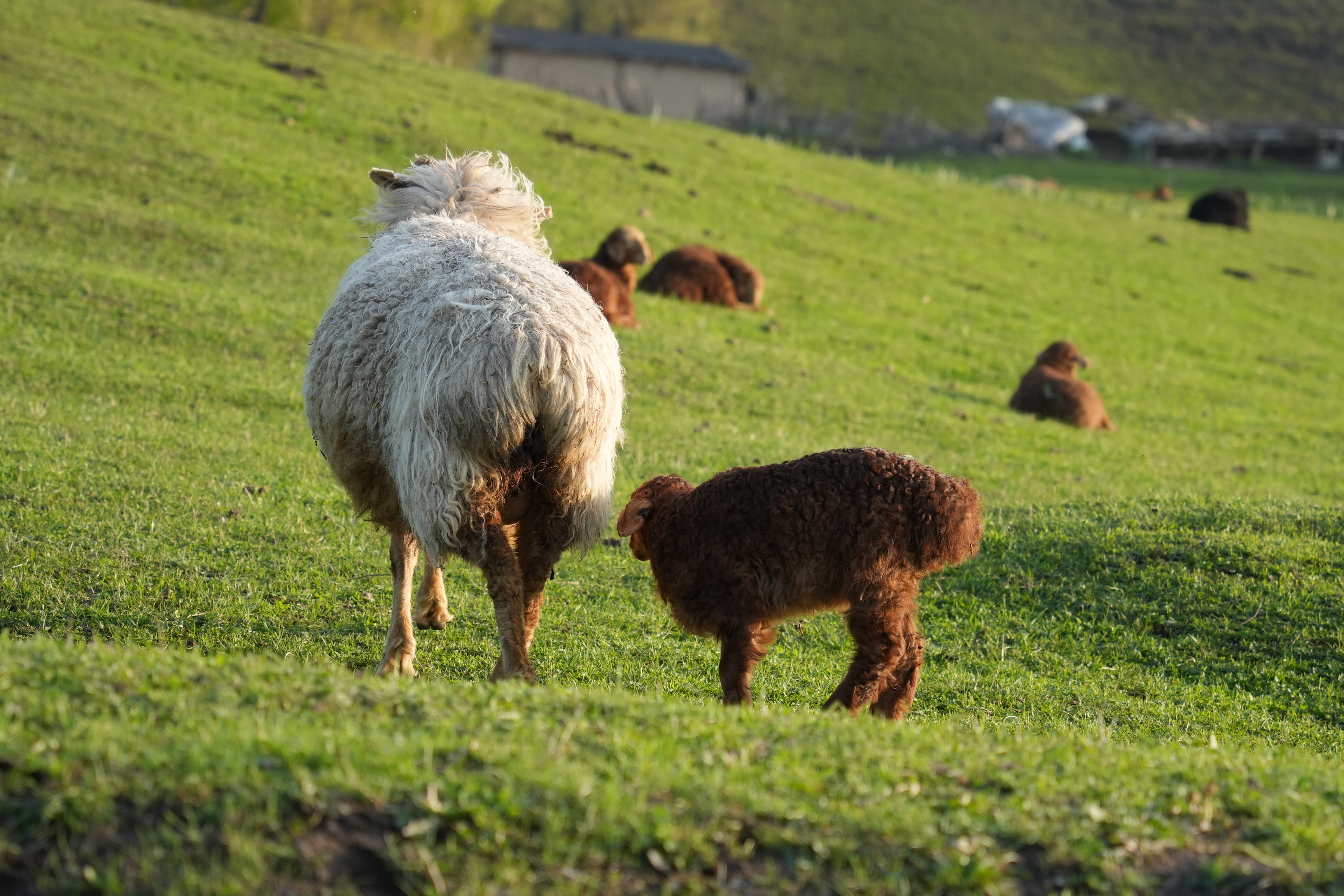There’s something profoundly moving about witnessing the cycle of life on one of Asia’s most ancient grasslands. During my recent trip to Xinjiang’s Ili region, I spent several days exploring the magnificent Nalati Grassland, known locally as the “sky grassland” for its high elevation and proximity to the clouds.
April marks the beginning of spring in this region, when the grasslands awaken from their winter dormancy. The timing of my visit couldn’t have been more perfect - lambing season was in full swing, offering countless opportunities to observe the tender interactions between mother sheep and their newborns.
The Pastoral Symphony
The Nalati Grassland has been home to nomadic herders for thousands of years. Even today, local Kazakh families maintain their traditional lifestyle, moving their livestock between seasonal pastures. This particular scene unfolded just before sunset, when the shepherds were guiding their flocks back to the overnight enclosures.
I was struck by how the white adult sheep stood out against the vibrant green grass, while her brown lamb blended more naturally with the environment. This evolutionary contrast serves a purpose - the more visible adults draw predators’ attention away from the better-camouflaged young.
The golden hour light added a magical quality to the scene, creating a warm glow that emphasized the bond between mother and offspring. In the background, you can see other sheep grazing peacefully, with the gentle slopes of the grassland stretching toward the distant mountains.
A Fragile Ecosystem
Beyond its visual beauty, Nalati represents one of China’s most important grassland ecosystems. These vast meadows act as natural carbon sinks and water reservoirs, playing a crucial role in regulating the regional climate. The balanced relationship between the herders, their animals, and the land has helped preserve this ecosystem for generations.
However, climate change and modernization pose new challenges. Local conservation efforts focus on sustainable grazing practices that allow both the traditional lifestyle and the natural environment to thrive. Witnessing this delicate balance firsthand gave me a deeper appreciation for the interconnectedness of all living things.
Technical Notes
This image was captured with a Sony A7IV and 70-200mm f/2.8 GM lens at 135mm. Settings: f/4, 1/500s, ISO 400.
I chose a slightly wider aperture to create some separation between the subjects and the background, while maintaining enough depth of field to keep both animals sharp. The low angle perspective helps emphasize the vastness of the grassland while creating a more intimate view of the animals.
The late afternoon light required minimal post-processing - just slight adjustments to contrast and vibrance to match what I saw with my eyes. Sometimes nature provides the perfect lighting conditions, and the photographer’s job is simply to be in the right place at the right moment.
